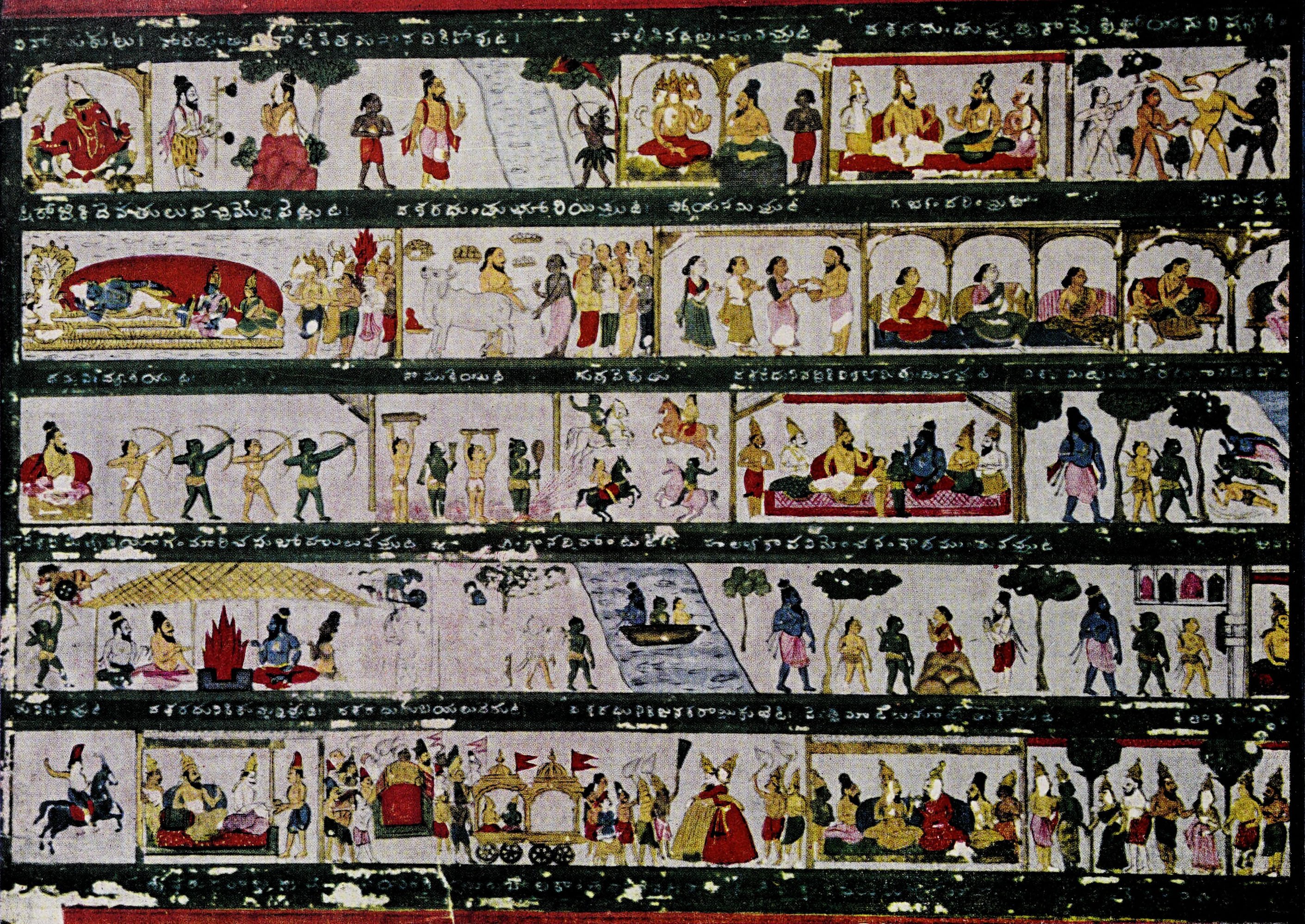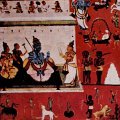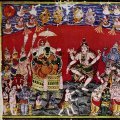Vijayanagara Paintings: photo 30
Photo 30 of 37 in Gallery: Vijayanagara Paintings

Image title: Plate 30 Ramayana Miniatures
Description of the photo
[Full title: Miniatures illustrating Ramayana scenes, Nayaka, Sarasvati Mahal Library, Thanjavur, 17th century]
Cf. Plate 28, 29.
The paintings from the temple at Tāḍpatri, the later murals from Kāñcīpuram [Kanchipuram] area, the miniature paintings from the Āndhra and Tamil districts, like the Coronation of Yudhiṣṭhira and the Yamapaṭa scene from Cuddapah [Kadapa], and the long series of Rāmāyaṇa episodes, with explanatory labels, as is usual in such paintings, both in murals and miniatures, are all typical examples of this phase.
The last mentioned is one of several miniatures of the Nayaka period of the seventeenth century now preserved in the Sarasvatī Mahāl Library at Tañjāvur. The seventeenth century was thus very fruitful. The paintings produced during the time of the Nawābs in the South in the eighteenth century, like those of Cuddapah, Kurnool, Arcot and Mysore, are only an extension of the Vijayanagara-Nayaka style, with the Deccani influence of the Bijapur, Golkonda, Hyderabad schools, that are themselves tinged by the Mughal style.
Gallery information:
This plate is contained in the book “Vijayanagara Paintings”, a valuable aid to the understanding of Indian iconography (also known as śilpaśāstra). The Vijayanagara empire was established in 1335 by Harihara, Harihara, Kaṃpa and Bukka (sons of Saṅgama) and grew to be a dominant power in the South. Painting has been considered in the Citrasūtra of the Viṣṇudharmottara, the early standard text on painting, as the premier art.
Photo details:
High resolution:
Download file
Size: 1.83 MB
Resolution: 2821 x 1997
© Copyright: see gallery source

